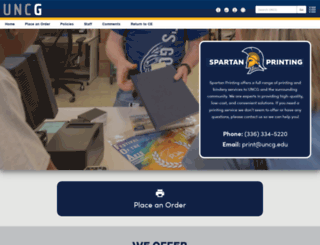Spartan Printing | Campus Enterprises
Page Load Speed
1.8 sec in total
First Response
56 ms
Resources Loaded
1.5 sec
Page Rendered
211 ms

About Website
Visit printing.uncg.edu now to see the best up-to-date Printing Uncg content for United States and also check out these interesting facts you probably never knew about printing.uncg.edu
Visit printing.uncg.eduKey Findings
We analyzed Printing.uncg.edu page load time and found that the first response time was 56 ms and then it took 1.8 sec to load all DOM resources and completely render a web page. This is quite a good result, as only 35% of websites can load faster.